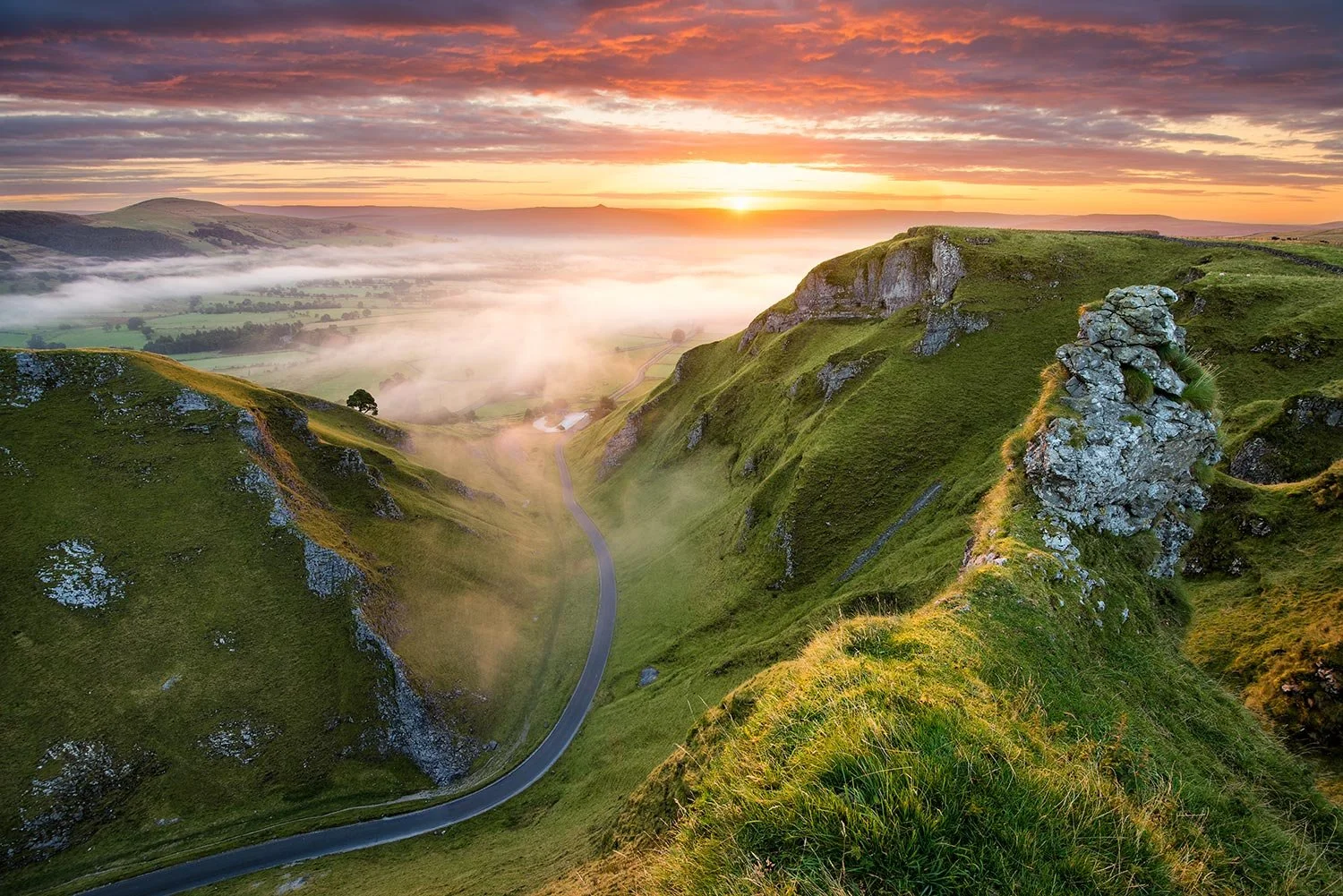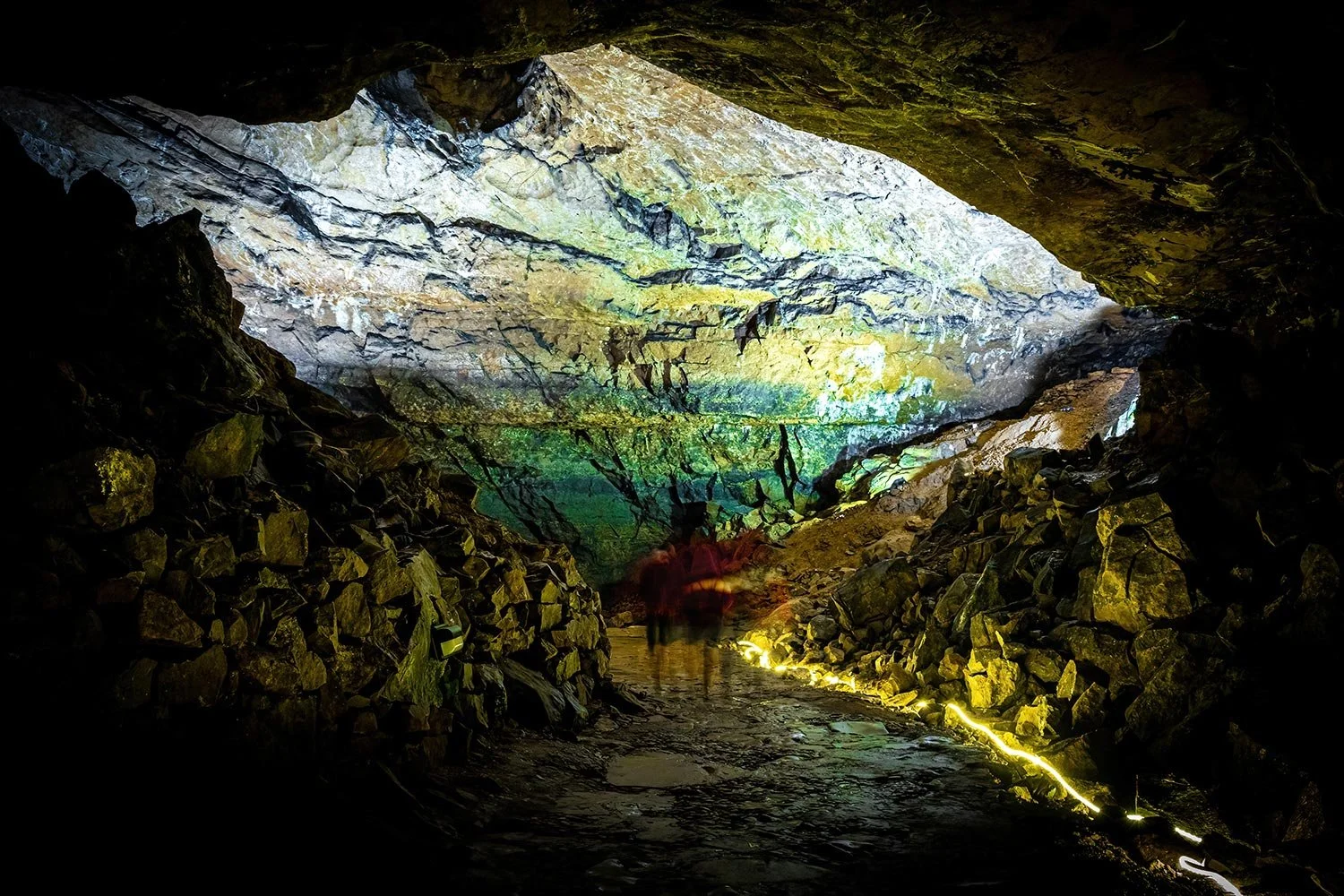The Allure of the Underground
The Allure of the Underground
The Peak District is not just a land of rolling hills, dramatic moorlands, and scenic valleys - it’s also home to a world of mystery beneath the surface. Hidden within its limestone landscapes lies a vast network of caves, caverns, and underground wonders that attract adventurers from across the world. From well-known show caves to challenging wild caving systems, the Peak District's underground realm tells stories of geology, exploration, and human resilience.
This article delves into the fascinating world of caves and caving in the Peak District, exploring popular sites, geological features, and the tragic story of Neil Moss, a young man whose passion for exploration ended in tragedy.
The Geology of the Peak District's Caves
The caves of the Peak District owe their existence to the region’s limestone geology, particularly in the White Peak area. Over millions of years, rainwater, made slightly acidic by absorbing carbon dioxide, has dissolved the calcium carbonate in the limestone bedrock, creating an intricate network of caves, sinkholes, and underground streams.
Key features of these caves include:
Passages and Chambers: Sculpted by water over millennia.
Stalactites and Stalagmites: Mineral-rich water deposits form these stunning features.
Underground Rivers: Active streams continue to shape the caves, contributing to their dynamic nature.
Famous Show Caves in the Peak District
For those new to caving or seeking a family-friendly experience, the Peak District is home to several show caves that are open to the public. These accessible sites offer insights into the beauty of the underground world.
1. Blue John Cavern
Located near Castleton, this cavern is renowned for its veins of Blue John, a rare and beautiful fluorite mineral. Visitors can explore large chambers, admire natural formations, and learn about the cave’s history.
2. Speedwell Cavern
Speedwell Cavern offers a unique underground boat ride along its flooded passages. Originally a lead mine, it now provides visitors with a tranquil journey through this fascinating subterranean world.
3. Treak Cliff Cavern
Another Castleton gem, Treak Cliff Cavern is known for its vibrant Blue John formations and impressive stalactites and stalagmites. Guided tours showcase its natural and historical significance.
4. Peak Cavern
Locally known as the “Devil’s Arse,” Peak Cavern boasts the largest cave entrance in the British Isles. Historically used as a rope-making site, it combines cultural heritage with dramatic geology.
Wild Caving in the Peak District
For adventurous explorers, the Peak District offers a wealth of wild caving opportunities. Unlike show caves, wild caves require specialized equipment and experience, providing a more raw and challenging experience.
Popular Wild Caving Sites:
Oxlow Caverns: Near Castleton, this system features vertical shafts and stunning formations.
P8 (Jackpot and Jolly Roger Cave): A challenging cave known for its waterfalls and crawls.
Eldon Hole: One of the deepest potholes in the Peak District, Eldon Hole is a thrilling descent for experienced cavers.
The Tragic Story of Neil Moss
While caving offers thrilling adventures, it also carries risks. One of the most tragic incidents in British caving history is the story of Neil Moss, a young and ambitious student whose exploration of Peak Cavern ended in disaster.
Neil Moss’s Fatal Descent
In March 1959, Neil Moss, a 20-year-old geology student at Oxford University, joined a group of caving enthusiasts to explore a deep and narrow passage in Peak Cavern near Castleton. Fascinated by the underground world, Moss was determined to push the boundaries of exploration.
During the expedition, Moss descended into an unexplored shaft, now known as Moss Chamber, to investigate its depths. Unfortunately, he became trapped in a constricted section of the shaft, unable to move either forward or backward. Despite the efforts of his fellow cavers and rescue teams, the narrow passage and the complexity of the situation made it impossible to free him.
Rescue Attempts
Rescue teams worked tirelessly to save Moss, providing him with oxygen and attempting to extract him from the shaft. Tragically, their efforts were in vain, and Moss succumbed to asphyxiation after being trapped for over 24 hours.
The decision was made to leave his body in the cave, as the risks of recovery were deemed too great. Today, Moss’s remains rest in the chamber that bears his name, serving as a somber reminder of the dangers inherent in caving.
Robin Hood’s Cave
Perched on the iconic Stanage Edge, Robin Hood’s Cave is a fascinating spot that blends natural beauty with the allure of legend. This small but captivating cave, nestled within the gritstone escarpment, offers an intriguing destination for climbers, walkers, and those curious about the myths surrounding England’s most famous outlaw.
A Natural Retreat
Robin Hood’s Cave is not a deep cavern but rather a sheltered nook carved into the gritstone by millennia of weathering. Its modest size and overhanging rock formations make it a perfect refuge from the elements, offering visitors a place to pause and marvel at the sweeping views of the Hope Valley below. The cave is accessible via a scramble from the main Stanage Edge path, adding a touch of adventure to the journey.
Ties to the Robin Hood Legend
As with many locations across England, Robin Hood’s Cave is steeped in folklore. While there’s no historical evidence linking the site to the legendary outlaw, local tradition suggests it may have been a hiding place or lookout point used by Robin Hood and his band of merry men. The cave’s vantage point and natural camouflage certainly fit the romanticized image of a secret hideaway.
A Destination for Climbers and Walkers
Stanage Edge is a world-renowned destination for rock climbers, and Robin Hood’s Cave adds an extra layer of charm to the experience. Climbers often use the cave as a resting point, while walkers enjoy the challenge of finding it along the edge’s rugged terrain. The location is particularly popular at sunrise and sunset, when the golden light bathes the landscape in a magical glow.
Practical Tips for Visitors
Access: The cave is located on Stanage Edge, which is easily reached from Hathersage. A short hike along well-trodden paths will lead you to the general area, but finding the cave itself requires careful navigation and a bit of scrambling.
Safety: The gritstone around the cave can be slippery, especially in wet weather, so sturdy footwear and caution are advised.
Respect the Environment: As with all locations in the Peak District, visitors should follow Leave No Trace principles to preserve the natural beauty of the area.
A Place of Imagination and Adventure
Robin Hood’s Cave on Stanage Edge is more than just a geological feature—it’s a gateway to imagination, where visitors can immerse themselves in the timeless legends of the English countryside. Whether you’re exploring the edge for its climbing challenges, hiking opportunities, or simply to soak in the stunning views, this hidden gem is a reminder of the magic that lies in the heart of the Peak District.
Safety and Conservation in Caving
The tragic story of Neil Moss underscores the importance of preparation, safety, and respect when exploring caves. While the Peak District offers unparalleled underground adventures, these spaces demand careful planning and adherence to safety guidelines.
Safety Tips:
Use Proper Equipment: Helmets, headlamps, and sturdy footwear are essential. Carry backup light sources and first aid supplies.
Plan Your Route: Familiarize yourself with the cave’s layout and ensure it matches your skill level.
Go with an Experienced Group: Never cave alone. Joining a group with experienced cavers ensures safety and guidance.
Monitor Weather Conditions: Heavy rain can flood caves rapidly, making conditions dangerous.
Inform Someone: Always let someone know your plans and expected return time.
Conservation Guidelines:
Leave No Trace: Take all waste with you and avoid damaging the environment.
Respect Wildlife: Many caves are home to bats and other sensitive species.
Follow Local Rules: Some caves have restricted access to protect their ecosystems.
The Allure of the Underground World
The caves of the Peak District offer a unique blend of adventure, natural beauty, and history. From the accessible show caves of Castleton to the challenging depths of wild caves, these subterranean wonders captivate those who venture beneath the surface.
However, the tragic tale of Neil Moss is a powerful reminder of the risks and responsibilities that come with caving. It highlights the importance of respecting the unpredictable nature of these environments while cherishing their extraordinary beauty.
Exploring the Peak District’s caves can be a transformative experience, offering a deeper connection to the land and its stories. With proper preparation and a commitment to safety, the wonders of the underground world are there to inspire and awe, providing memories that last a lifetime.





